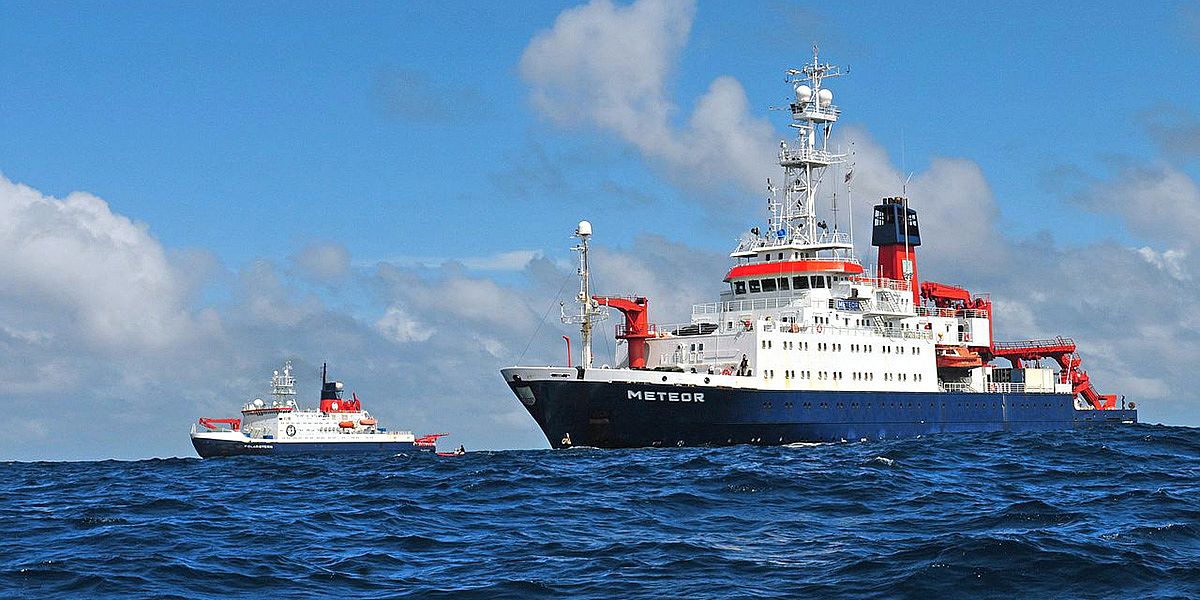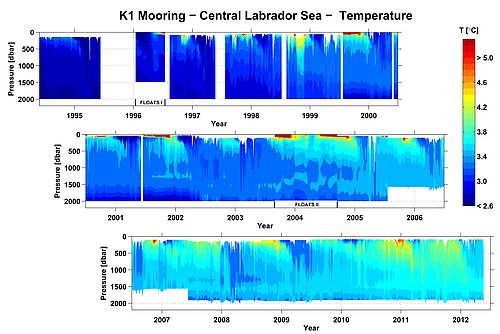The ocean is a stratified medium, which means that certain characteristic properties, such as temperature, salinity, dissolved oxygen or the greenhouse gas carbon dioxide, change with depth and geographic position. One of the objectives of physical oceanography is to develop an exact understanding of the physical processes which cause the observed distributions of those key properties in the ocean. Such an understanding is necessary to be able to identify, out of a million or so different processes, those which allow a reliable prediction of the future climate development on Earth.
One central process in the redistribution of oceanic key properties is convection, i.e. the spatial redistribution of particles which carry a certain amount of heat. In the ocean, convection typically occurs by the cooling of surface waters, i.e. heat losses to the atmosphere, followed by a sinking of the now colder and heavier water. This convection is typically also associated with a number of other processes, such as the rising of warmer waters, and a spatially and temporally uneven distribution of the cooling processes. In connection with additional changes in salinity, this entire density driven movement is known as thermohaline circulation.
In the early years of physical oceanography, people assumed that some key parameters, such as temperature and salinity, were relatively constant. Therefore, specific combinations of such parameters were seen as being “characteristic” for certain oceanic regions, and were described as “watermasses”. Such watermasses can change through spreading and mixing with other watermasses, or through changed boundary conditions which modify these characteristics. For example, the above figure shows that the long-term changes in atmospheric conditions (i.e. warming, less wind forcing) prevented sufficient cooling of the surface waters, thereby eliminating the deep-reaching convection in the central Labrador Sea. Biogeochemical parameters, such as oxygen and carbon dioxide, are also affected by these circulation patterns.




